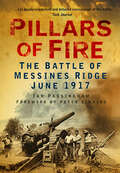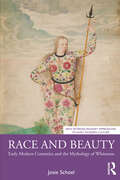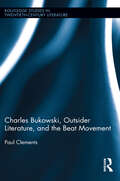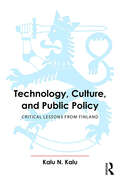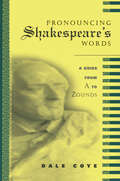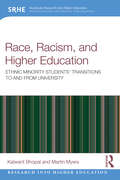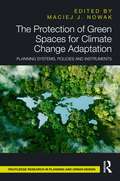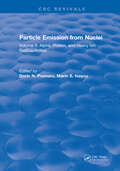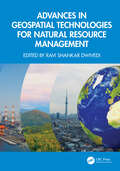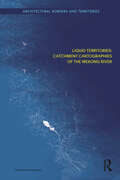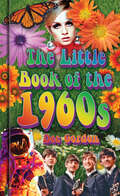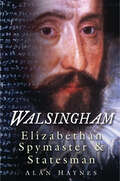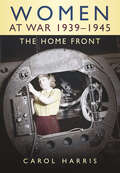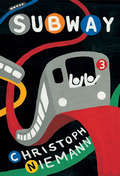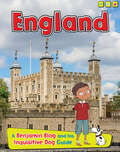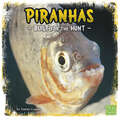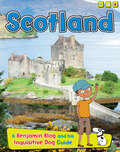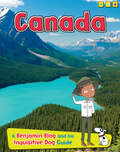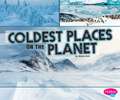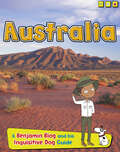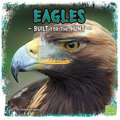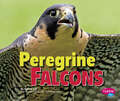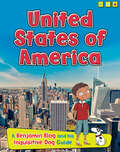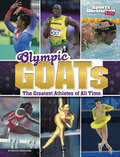- Table View
- List View
Pillars of Fire: The Battle of Messines Ridge, 1917
by Ian Passingham Peter Simkins'Gentleman, we may not make history tomorrow, but we shall certainly change the geography.' So said General Plumer the day before 600 tons of explosives were detonated under the German position on Messines Ridge. The explosion was heard by Lloyd George in Downing Street, and as far away as Dublin.Until 1918, Messines was the only clear cut Allied victory on the Western Front, coming at a time when Britain and her allies needed it most: boosting Allied morale and shattering that of the Germans. Precisely orchestrated, Messines was the first true all-arms modern battle which brought together artillery, engineers, infantry, tanks, aircraft and administrative units from a commonwealth of nations to defeat the common enemy. So why is its name not as familiar as the Somme, Passchendaele or Verdun?This book examines the battle for the Messines-Wytschaete Ridge from the British, ANZAC and German perspectives. Illustrated with archive photographs and maps, it is a major contribution to our understanding of one of the seminal battles of the First World War.
Race and Beauty: Early Modern Cosmetics and the Mythology of Whiteness (New Interdisciplinary Approaches to Early Modern Culture)
by Josie SchoelThis work examines how beauty standards, specifically the ideology of "fairness", contributed to the racialization of bodies in early modern England. Schoel emphasizes the need to dismantle whiteness’s invisibility in historical criticism, noting that it has long been an unexamined norm. By focusing on the materiality of cosmetic whiteness, the text aims to disrupt colorblind ideologies and reveal the mechanisms behind white supremacy.Drawing on diverse texts like sonnets, travel literature, and medical treatises, the book discusses how light skin and hair were idealized, symbolizing Christian virtue and femininity. This rhetoric of fairness not only promoted racial hierarchies but also constructed whiteness through cosmetics like whitening creams and exfoliants. These practices, associated with Queen Elizabeth I's image and widely reproduced in theater, medicine, and household texts, led to a "cult of whiteness". The locus of the cult was Queen Elizabeth I, whose materially constructed reds and whites in her portraiture and on the surface of her skin resounded throughout the commonwealth. If the cult of whiteness was founded by Elizabeth's propagandistic image campaign, it was facilitated and reproduced through theatrical productions, medical treatises, household manuals, and the birth of the apothecary, which made the materials of whiteness accessible to a wider socially diverse network of consumers.The book is not only an ideal resource for students and scholars of early modern studies, performance, and Critical Race Studies, but for all those seeking an introduction to constructions of race in early modern England.
Charles Bukowski, Outsider Literature, and the Beat Movement (Routledge Studies in Twentieth-Century Literature)
by Paul ClementsThis book uses cultural and psycho-social analysis to examine the beat writer Charles Bukowski and his literature, focusing on representations of the anti-hero rebel and outsider. Clements considers the complexities, ambiguities, and contradictions represented by the author and his work, exploring Bukowski’s visceral writing of the cultural ordinary and everyday self-narrative. The study considers Bukowski’s apolitical, gendered, and working-class stance to understand how the writer represents reality and is represented with regards to counter-cultural literature. In addition, Clements provides a broader socio-cultural focus that evaluates counterculture in relation to the American beat movement and mythology, highlighting the male cool anti-hero. The cultural practices and discourses utilized to situate Bukowski include the individual and society, outsiderdom, cult celebrity, fan embodiment, and disneyfication, providing a greater understanding of the beat generation and counterculture literature.
Technology, Culture, and Public Policy: Critical Lessons from Finland
by Kalu KaluIn a relatively short time, Finland has transformed a society of approximately 5.3 million people into one of the most educated and technologically sophisticated in the world, while maintaining relative political stability and an enviable quality of life among its people. In all comparative measures of international achievement, Finland ranks at the top among the world’s most literate and wealthiest countries. How did Finland do it, and what can other countries learn from the Finnish example?This book presents an energized and informative look at Finland’s cultural and developmental history, its political evolution as a state, the foundation and origins of its technology and innovation policy, and present developments in health care, education, and the pathway to sustainable economic development. Utilizing both qualitative and quantitative approaches, author Kalu Kalu incorporates rarely-seen archival data alongside analysis of original research surveys disseminated to members of the Finnish national legislature, personnel of the ministries of education and health, administrators in local government jurisdictions, and members of the general public. The result is a book that offers an incisive and analytical account of virtually all aspects of Finnish life – ranging from culture, parliamentarianism, arts, architecture, design, literature, education and health policies, information technology, to the development of multipolis technology clusters and networks. Demonstrating how civic attitudes have evolved over time mediated by the pressures of technology and modernity, Technology, Culture, and Public Policy ultimately transcends an examination of Finland’s own successes and challenges, considering what lessons other countries might apply to their own intricate national contexts.
Pronouncing Shakespeare's Words
by Dale CoyeHow do you pronounce zounds, Milan, housewife and hundreds of other words in Shakespeare's plays? In this ingenious book, Dale Coye has provided a guide to each significant word, line-by line, scene-by-scene, in twenty of Shakespeare's most popular plays. More than a simple pronouncing dictionary, Pronouncing Shakespeare's Words pays attention to scansion, displays alternative pronunciations in different centuries and geographical areas, and provides a simple pronunciation guide requiring no knowledge of lexicographic symbols. Now available in an affordable paperback edition, Pronouncing Shakespeare's Plays will become a vade mecum (pronounced VAH-day MAY-cum) for actors, students, and general readers of Shakespeare.
Race, Racism, and Higher Education: Ethnic Minority Students’ Transitions to and From University (Research into Higher Education)
by Kalwant Bhopal Martin MyersDrawing upon current debates on inequalities in higher education, particularly those of race and class, and based on a Bourdieusian discussion of the relational nature of different capitals and competition for such capitals, this must-read text explores how Black and minority ethnic (BME) students navigate the university and the relational competition for capitals and status.With original accounts of the experiences of BME students in higher education, this book draws on interviews with 58 students across three different universities to further understand experiences of how BME students navigate the predominantly White spaces of UK universities. It explores how racial inequalities continue to persist in higher education and demonstrates that greater attention needs to be made to the transitions made, not just into higher education, but from higher education. It evidences how types of support offered by different universities to different types of students ensure systemic disadvantages are reinforced and that career outcomes are embodied and legitimised in students in the practices fostered by their university.Identifying that racism is not a new phenomenon in UK higher education but that it has adapted to changing socio-economic conditions, this is a must-read book for anyone working in higher education or with an interest in the experiences of BME students through the higher education system.
The Protection of Green Spaces for Climate Change Adaptation: Planning Systems, Policies and Instruments (Routledge Research in Planning and Urban Design)
by Maciej J. NowakThe Protection of Green Spaces for Climate Change Adaptation identifies how spatial planning and climate change adaptation are linked by examining the protection of green spaces in cities across Europe, Africa, the Middle East, South America and Australia.This book identifies how, in each case, spatial planning instruments can influence the protection of green spaces, and whether – and if so how – they are being adapted in response to actual and expected effects from climate change. In doing so, the institutional frameworks of each country analysed are first presented. This provides the basis for discussing the key problems occurring at the state (and city) level in responding to the challenges of climate change adaptation, especially for the protection of green spaces. In the individual chapters, the issues identified above will be analysed from the perspective of diverse countries: Australia, Ghana, Iran, Mexico, Brazil and Poland. The contributors in this edited collection will present how the indicated issue is identified in systems that are diverse in many respects. This book concludes by demonstrating how the relationship between climate change adaptation and spatial planning can be framed in a more universal way, taking into account the international case studies that have been presented. This book deals extensively with both climate change adaptation issues and comparisons of spatial planning systems.By focusing on a synthesis of these issues, this book will add significantly to the discussion, providing a new basis for theoretical and practical considerations. It will be of interest to researchers and students of spatial planning, public policy, environmental protection, climate protection and law, as well as professionals working in these areas.
Particle Emission From Nuclei: Volume II: Alpha, Proton, and Heavy Ion Radioactivities
by Dorin N. PoenaruThis book has three volume. The first volume is mainly devoted to the macroscopic-microscopic theory in its traditional form and extended to very high mass and charge asymmetry. Applications of this theory to the emission of different kinds of charged particles from nuclei are presented in the second volume, where recent experimental achievements in alpha decay, proton, and heavy ion (14C, 24Ne, 28Mg, etc.) radioactivities are also discussed. Experiments on spontaneous fission, fission isomers, and more complex phenomena like particle-accompanied fission,delayed processes: p, a, 2p, t, n, 2n, 3n, and the new mechanism of cold fission (or fission with compact shapes) are described in detail in the third volume.
Advances in Geospatial Technologies for Natural Resource Management
by Ravi Shankar DwivediTimely and reliable information on natural resources, regarding their potential and limitations, is a prerequisite for sustainable development. Geospatial technologies offer immense potential in providing such information in a timely and cost-effective manner. Using orbital sensors data in conjunction with airborne and proximal sensors data to generate information on soils and agricultural resources, forests, mineral resources, fossil fuel, wetlands, water resources, and marine resources, this book focuses on the advancements in technologies applicable to managing these resources. It addresses global issues like climate change and land degradation neutrality and introduces spatial data infrastructure (SDI) as a mechanism for sharing geospatial data. This book also provides an in-depth discussion on drones, crowdsourcing, cloud computing, Internet of Things, machine learning, and their applications.FEATURES Contains a comprehensive resource on the latest developments in geospatial technologies and their use in monitoring natural resources, productivity mapping, and modeling Explains the geo-computation methods and online algorithm developments Includes clear guidance on how best to use geospatial data for various applications Discusses case studies from a variety of fields and current trends in the management of natural resources Provides future scenarios concerning platforms, sensors, data analysis, and interpretation techniques This book is written for remote sensing and GIS professionals in environmental institutions and government who are involved in natural resource management projects. Senior undergraduate and graduate-level students in Earth sciences, geography, or environmental management can also use this text for supplementary reading.
Liquid Territories: Catchment Cartographies of the Mekong River (Architectural Borders and Territories)
by Christoforos RomanosIn addition to being a fundamental concept for planning the water infrastructure which supports extensive agricultural economies across Southeast Asia, knowledge of the Mekong River’s hydrological catchments has calibrated the control of land, resources and people. Liquid Territories shows how and why the areal dimensions of the Mekong’s basin, delta and floodplain have become a critical geographic reference for human activities.This book concentrates on the way knowledge of the river’s catchments has been recorded on, and extracted from, maps. Repeatedly drawn by geographers, engineers and cartographers since before the start of European colonization, the book describes how cartographic projections of the basin, delta and floodplain have affected geopolitical strategy, the exercise of military power and anthropogenic modifications of the terrain. Drawing on the discourses of hydrology, geography and cartography, as well as military science, colonial politics and regional planning, the book explains why the spatial articulation of surface water flows is reflected in the configuration of national boundaries, soils and settlements today. Focusing on geographic concepts, the book provides insights into the process of urbanization in Southeast Asia, the region’s colonial and post-colonial history, the Mekong River’s political ecology, the scales of contemporary water management and the design of territory.This book will be relevant to academics who are interested specifically in the Mekong River and Lower Mekong Basin as well as in integrated water management planning. It would be especially relevant to architects, urbanists and landscape architects.
The Little Book of the 1960s (Little Book Of)
by Dee GordonBased on quirky facts and fascinating data, with a discerning eye on the bizarre, the frivolous and the funny, The Little Book of the 1960s is nostalgia with a difference. The sights, the sounds, the lifestyle, the whole 1960s experience can be relived through the pages of this book, but be warned – you’ll need a sense of humour. It’s a book that can be dipped in to time and time again to reveal something new about the people, the fashions, the scandals and the enduring fascination of a decade that was truly the most colourful of all. Did You Know? When the Beatles played at the Birkenhead YMCA in 1962 for just £30 (the same year Decca famously turned them down because ‘groups with guitars were on their way out’), they were booed off stage. When Barbara Windsor and the cast of Sparrers Can’t Sing were filming in the East End in the early 1960s, the Krays were hired to provide security on the set. When Princess Margaret married photographer Antony Armstrong-Jones in May 1960, she became the first royal to marry a commoner for 450 years.
Walsingham: Elizabethan Spymaster and Statesman
by Alan HaynesWalsingham, Elizabeth's spymaster had established an extensive spy network the world had ever seen, placing secret agents throughout Europe, especially in the Catholic courts of Spain, Italy, and France, to ferret out Catholic plots against Elizabeth. Yet Elizabeth ignored her spymaster. Walsingham, distrusted for being too powerful.
Women at War 1939-1945: The Home Front
by Carol HarrisLong before the outbreak of the Second World War, official calculations showed Britain would be short of the manpower needed to fight the enemy and keep up production of weapons, food and other essentials. It was hoped that women volunteers would full the gaps and so they volunteered as workers in Civil Defence, the Women's Land Army, munitions factories and non-combatant roles in the Forces. But by 1941, the Government had to face facts: any effective response would have to involve conscription of British women. All females between the ages of fourteen and sixty-four were registered and soon the vast majority had work to do. They collected tons of salvage, knitted and sewed, and raised money for warships and weapons. Women ran fire stations and drove makeshift ambulances while cities burned and enemy bombs exploded around them. They kept their families going, often as single parents while their husbands were away for years in the armed forces. By the end of the war, some of the most experienced rat-catchers in the country were female; others were accomplished engineers, carters, rail workers and bargees. When it was over, these wartime roles were not commemorated in films and books. There has been little official acknowledgement of the enormous and crucial contribution those British women made to the lives we live now. Many are getting on in years and their precious first-hand memories will go with them. Their stories are worth telling now for that alone. But they are also tales of love, death, sacrifice and romance, of humour and horror, and of an extraordinary time, when ordinary women did extraordinary things.
Subway
by Christoph NiemannSpeed. Color. Sound. Numbers. Maps. Connections. Navigation. Subway systems may be specific to certain cities around the world, but the pure thrill of a subway ride is universal to all young children.Christoph Niemann’s graphically elegant and playful picture book is a tour de force for preschoolers and a stellar addition to the canon of books about trains, trucks, planes, and automobiles.Based on the author’s own underground adventures with his young boys—chronicled for adult readers in Niemann’s New York Times blog, Abstract City—this innovative picture book is an invitation down underground, where a system of trains and tracks delivers millions of riders to their destinations each day.“Underneath the city is this beautifully simple system of letters, numbers, and colors. The trains and stations are huge and impressive but also comforting, because nothing ever changes. My boys are in charge; they can read the signs, navigate the grid, and they always know what happens next.”—Christoph Niemann
England: The Life Of England's Renaissance Queen (Country Guides, With Benjamin Blog And His Inquisitive Dog Ser.)
by Anita GaneriJoin intrepid explorer Benjamin Blog and his inquisitive dog Barko Polo as they travel to one of the world’s most fascinating countries: England! The book includes chapters on English history, geography, cities, people, and food, as well as visiting some of the most famous places of this unique country, such as the Tower of London and Hadrian’s Wall.
Piranhas: Built For The Hunt (Predator Profiles Ser.)
by Tammy GagneWith razor-sharp interlocking teeth and powerful jaws, piranhas are built for making a quick kill. In just a few minutes, a group of hungry piranhas can strip prey down to its bones. Readers will learn about what makes piranhas such deadly predators, from their hunting styles to what they like to eat. Fun Facts and an Amazing but True section will thrill readers and give them a closer look at the lives of these fearsome freshwater creatures.
Scotland: A Benjamin Blog And His Inquisitive Dog Guide (Country Guides, With Benjamin Blog And His Inquisitive Dog Ser.)
by Anita GaneriJoin intrepid explorer Benjamin Blog and his inquisitive dog Barko Polo as they travel to one of the world’s most fascinating countries: Scotland! The book includes chapters on Scottish history, geography, cities, people, and food, as well as visiting some of the most famous places of this unique country, such as Edinburgh Castle and Loch Ness.
Canada (Country Guides, With Benjamin Blog And His Inquisitive Dog Ser.)
by Anita GaneriJoin intrepid explorer Benjamin Blog and his inquisitive dog Barko Polo as they travel to one of the world’s most fascinating countries: Canada! The book includes chapters on Canadian history, geography, cities, people, and food, as well as visiting some of the most famous places of this unique country, such as the CN Tower and Niagara Falls.
Coldest Places on the Planet (Extreme Earth Ser.)
by Karen SollRead what it’s like to live in a very cold place. In this book, you’ll visit cities with very cold weather and learn why the temperatures dip so low.
Highest Places on the Planet
by Karen SollSome places are so high that they touch the clouds. Read this book to find out more about places with very high elevations.
Australia (Country Guides, With Benjamin Blog And His Inquisitive Dog Ser.)
by Anita GaneriJoin intrepid explorer Benjamin Blog and his inquisitive dog Barko Polo as they travel to one of the world’s most fascinating countries: Australia! The book includes chapters on Australian history, geography, cities, people, and food, as well as visiting some of the most famous places of this unique country, such as Uluru and Sydney Harbour Bridge.
Eagles: Built For The Hunt (Predator Profiles Ser.)
by Tammy GagneHave you ever had someone say you had an eagle eye? This saying comes from the fact that eagles have excellent eyesight. An eagle can spot prey from up to one mile away! Eagles also have sharp talons and can fly at jaw-dropping speeds to capture prey. Readers will learn about what makes eagles such deadly predators, from their hunting styles to what they like to eat. Fun Facts and an Amazing but True section will thrill readers and give them a closer look at the lives of these awesome creatures.
Peregrine Falcons (Birds Of Prey Ser.)
by Melissa HillPeregrine falcons plummet through the air at top speed to snag their favorite meal smaller birds. Big, bold photos accompany carefully-leveled text on habitat, behavior, life cycle, and threats to this speedy raptor.
United States of America: A Benjamin Blog And His Inquisitive Dog Guide (Country Guides, With Benjamin Blog And His Inquisitive Dog Ser.)
by Anita GaneriJoin intrepid explorer Benjamin Blog and his inquisitive dog Barko Polo as they travel to one of the world’s most fascinating countries: the United States of America! The book includes chapters on American history, geography, cities, people, and food, as well as visiting some of the most famous places of this unique country, such as the Grand Canyon and the Empire State Building.
Olympic GOATs: The Greatest Athletes of All Time (Sports Illustrated Kids: GOATs)
by Bruce BerglundHow do you pick Olympic GOATs? Is it gymnast Simone Biles or swimmer Michael Phelps? Or maybe it’s the entire 1992 basketball team. With so many sports, how do you choose? It comes down to stats, history, and hunches. Read more about some of the legends of the Olympic Games and see if you agree that they’re the greatest of all time.
